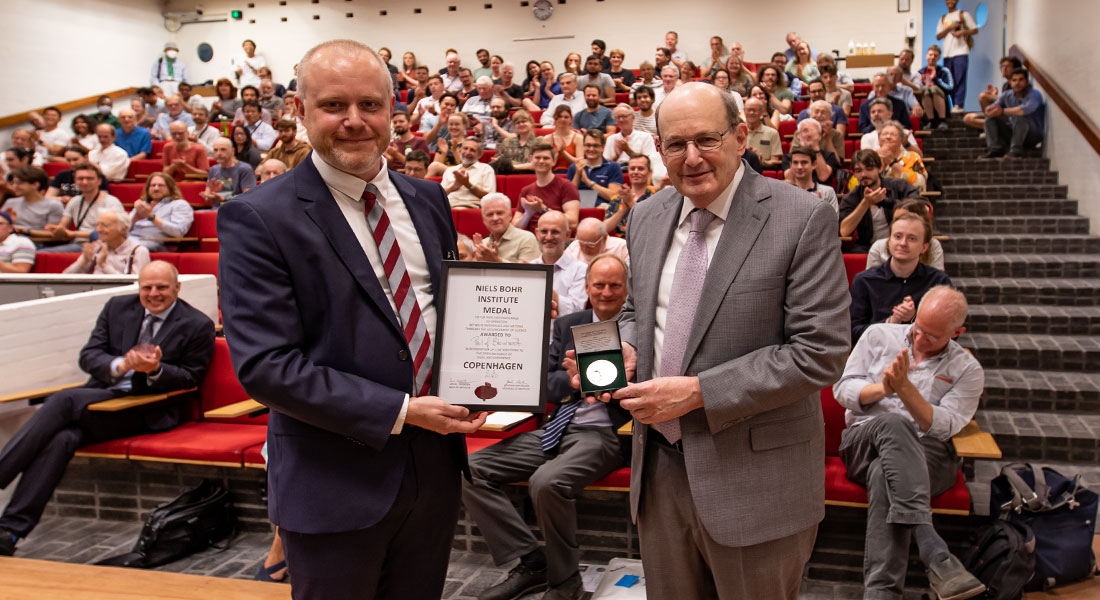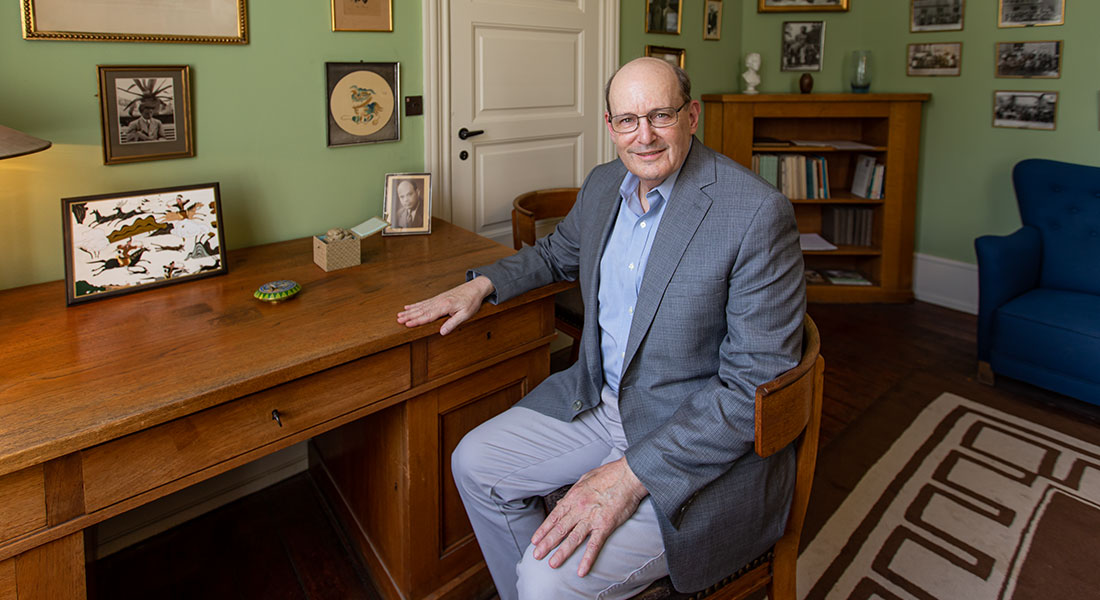Paul J. Steinhardt is awarded the Niels Bohr Institute Medal of Honour 2020
Established in 2010 to mark the 125th anniversary of the birth of Niels Bohr, the Niels Bohr Institute Medal of Honor is awarded every year to a particularly outstanding scientist working in the spirit of Niels Bohr. This year the medal is awarded to Paul J. Steinhardt for his seminal and creative contributions to a remarkably wide range of subjects within the natural sciences, for his tireless advocacy of the unity of sciences, for his critical reconsideration of every scientific hypothesis that is not backed by experimental evidence, and for his remarkable skills of conveying to the public the excitement of scientific discovery.

Education and research career
Paul Steinhardt is Albert Einstein Professor in Science at Princeton University where he is on the faculty of both the Department of Physics and the Department of Astrophysical Sciences. He received his BSc from Caltech in 1974 and his PhD in Physics from Harvard University in 1978.
He was Junior Fellow at the Harvard Society of Fellows until 1981 and he was on the faculty of the University of Pennsylvania from 1981 to 1998, at which point he accepted a Professorship at Princeton University. Paul Steinhardt was founding Director of Princeton's Center for Theoretical Science 2007-2019.
Throughout his education and subsequent research career, Paul Steinhardt has succeeded in making seminal contributions to remarkably diverse areas of science: from the theory of glasses and other amorphous materials (already while an undergraduate at Caltech) to the introduction of the notion of orientational order parameters in describing partial alignments of atoms in liquids (while a Junior Fellow at the Harvard Society of Fellows).
His PhD-thesis was on lattice gauge theory, but he soon turned to particle physics problems with impact on early Universe cosmology, where he quickly became a leading and influential figure. He is renowned for his seminal contributions to the early developments of theory of Inflation, and has more recently spearheaded alternative ideas in terms of so-called bouncing or cyclic cosmologies.

Theory of Inflation and Quasicrystals
While being on the faculty at the University of Pennsylvania, and while developing the theory of Inflation, Paul Steinhardt was also a frequent visitor at the Thomas J. Watson Research Center of IBM, working on entirely different topics in condensed matter physics.
Indeed, and most remarkably, Paul Steinhardt is also well known for seminal contributions in a completely different branch of science. Partly in connection with his visits to IBM, he came up with the idea of quasicrystals (a word coined by him and the subject of a recent book written by him).
Paul Steinhardt, together with Dov Levine, proposed a potentially new order in real materials, a three-dimensional generalization of Penrose tiles with only quasi-periodicity, which was later found to exist in Nature.
The story of quasicrystals is particularly fascinating. Always insisting on theories passing tests and closest scrutiny, Paul Steinhardt organized a field trip in 2011 to "the middle of nowhere" in the Kamchatka Peninsula in order check if quasicrystals could have been produced in Nature (earlier examples were artificial in the sense that they were produced in the lab).
The successful outcome of the trip and the whole quest to confirm the physical reality of quasicrystals has been wonderfully described by Paul Steinhardt in his recent book The Second Kind of Impossible.
Paul Steinhardt currently devotes most of his research efforts to cosmology where he is a leading figure. Often a visitor to the Niels Bohr Institute, Paul Steinhardt has served for a number of years as a very active and influential member of the International Science Advisory Board of Niels Bohr International Academy.
Contact
Poul Henrik Damgaard, Professor
Email: phdamg@nbi.ku.dk
Phone: +45 35 32 53 76
